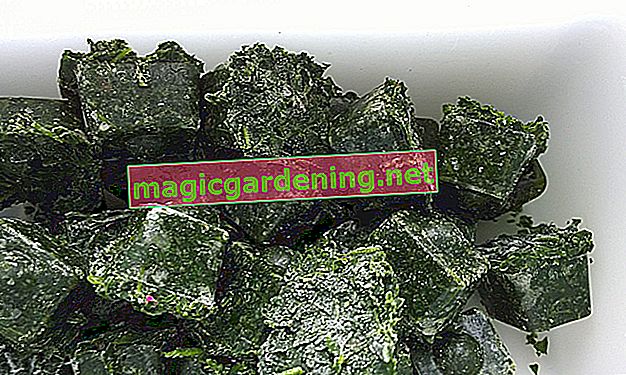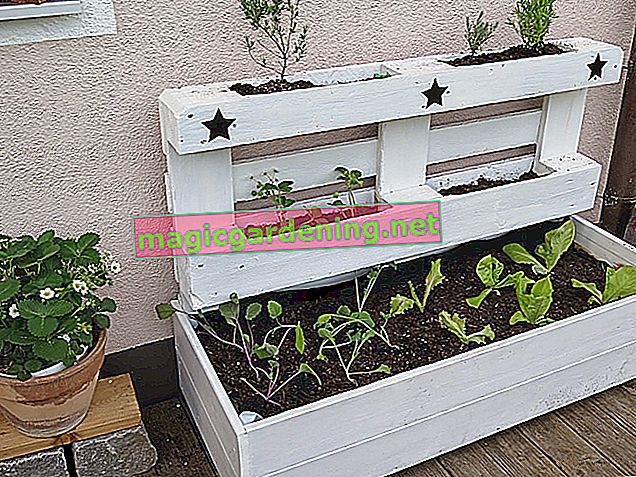
Sow the cherimoya
Loosen the large, black seeds from a ripe fruit and remove the pulp completely.
also read
- Growing a pear tree yourself - this is how you grow your own tree
- Growing peach yourself - this is how a cutting becomes a stately tree
- Harvest ripe cherimoya fruits yourself
Put the seeds individually about two centimeters deep in pots with potting soil and place them in a warm place. Cherimoya seeds germinate at temperatures of 25 to 30 degrees. The location shouldn't be too sunny.
It can take up to two months for the first plants to appear. As soon as leaves appear, place the pots in a warm place without direct sunlight.
A place on the terrace
- Sunny location
- Pour little
- Fertilize rarely
- Winter frost-free
When the cherimoya trees have developed well and have reached a height of 30 to 70 centimeters, plant them in pots. Cactus soil has proven itself as soil, because the plants don't like it too moist. If necessary, mix normal garden soil with some sand.
Older trees thrive in full sun.
Cherimoyas do not tolerate sub-zero temperatures. Winter them in the bright winter garden at temperatures around ten degrees. Older plants shed their leaves. There is nothing to worry about.
Water only sporadically
You don't have to water a lot. Let the soil dry out again and again and only then give it again water.
You should be careful with fertilizing. Add some plant fertilizer to the irrigation water every four weeks at the most.
In winter there is little watering and no fertilization at all.
Reap the fruits
The usual pollinators are missing in our latitudes. To harvest fruit, you need to pollinate the flowers yourself with a brush. This is complicated because the flowers are female in the morning and male in the evening.
If the pollination with a brush worked, you can harvest ripe cherimoyas from your sapling in late autumn or winter.
Tips & Tricks
The seeds of the cherimoya are poisonous. They contain alkaloids and must not be eaten under any circumstances. Because of their toxicity, they were even used as insect repellants in the past.
Ce








